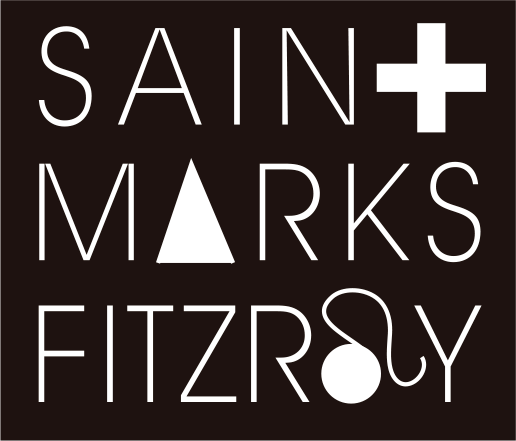Musical inspirations
Members of St Mark’s Choir write about a piece of music that inspires them
Nicole
My favourite liturgical piece is Handel’s ‘Dixit Dominus’. I have so many happy memories of singing this in church choirs, and was lucky enough to sing the solo alto part with the Newman College Choir (University of Melbourne) a couple of years ago which was such a privilege and an absolute delight.
My favourite movement is number 8 - the two soaring soprano lines are glorious. My two young daughters are fast becoming familiar with this piece as well, I love playing it while we are pottering around the house, particularly in our current state of isolation!
James
Growing up in church choirs, my expression of faith has been through song and has given me a passion for the music of the early masters (Palestrina and Tallis are two favorites). However, my favourite liturgical piece was composed in 1994.
Morten Lauridsen, with his interpretation of the responsorial chant, O Magnum Mysterium, has hit the perfect balance of early music feel with the added crunchiness of late 20th century chording. It is beautiful.
I am a sucker for pieces that have more than 4 parts for choir, and as a first tenor, love to be required to clash with the seconds. I first performed this with a small (but perfectly formed) choir in Nottingham in the UK. I have since performed this with small choirs, big choirs, professional choirs, amateur choirs, and for fun with mates.
This work has a consistent feel, but with a tremendous dynamic range. Singing softly in close harmony is such a thrill, particularly in a wonderful acoustic (such as St. Marks). Letting rip and just trusting everyone else to rip at the same time is invigorating. I particularly find Latin (with Italian pronunciation) fun to get one's teeth around - iacentemn in praesepio is a favorite. I also have to admit that having a tenor line that sails over the others from time to time is something to which I am not averse. Oo and the bass last note!
Getting lost in the moment when performing this work makes me feel so warm, loved and part of something greater than the sum of its parts.
I hope all enjoy listening to this wonderful tune.
Here is a recording that is live and not overly produced, how I'm used to it. It's making the hairs stand on end as I listen to it now.
Matt
INSANAE ET VANAE CURAE – Franz Joseph Haydn
Music is incredibly evocative. A few short phrases might send us frolicking through fields, or lay us on a cloud of sumptuous luxury, or bring us face-to-face with the Almighty. An enduring catalogue of timeless classics paint marvellous pictures of beauty and wonder.
I’ve chosen this piece because it’s terrifying.
Here are the words and a translation:
Words:
Insanae et vanae curae invadunt mentes nostras,
saepe furore replent corda, privata spe.
Quid prodest, O mortalis, conari pro mundanis,
si coelos negligas?
Sunt fausta tibi cuncta, si Deus est pro te.
Translation:
Frantic and futile anxieties invade our minds; they often
fill our hearts with madness, depriving them of hope.
What is the use, O mortal man, of striving after earthly things,
if you neglect heaven?
All things turn out well for you, if God is on your side.
Grim. But then lovely!
Haydn provokes our fears and anxieties with tumultuous conflagration, but then reassures us that everything will be fine with a beautiful, lyrical, calming embrace. Twice. The setting of the words “saepe furore” is particularly striking: even without knowing their meaning, any listener is immediately struck by the intensity: the sharp, angular rhythm raises the alarm, the tension heightened by the harsh dissonance of each voice crying out in turn.
While some sacred music may paint liturgical life as one blessed halcyon day after another, Insanae et Vanae Curae doesn’t. Haydn fearsomely asserts that real life isn’t like that, but when it is, you can bet God will be there for us amidst any invasion of “frantic and futile anxieties”, time after time.
The fire and brimstone sections are gloriously necessary: had Haydn presented the calm sections as a standalone work, the message might have seemed somewhat saccharine and insincere. By invoking the angst from which we are saved – twice – Haydn masterfully demonstrates that “all things turn out well for you, if God is on your side.”
I absolutely loved this piece when I first sung it as a 9- or 10-year-old! It was an invigorating antidote to some of the unimaginative pap we involuntarily trudged through Sunday after Sunday. It was an exciting adventure: we might not necessarily chose it for ourselves, but we know we’ll come out the other side renewed and invigorated, our faith galvanised. What a ride!
Andrea
The song that I have selected is a recent discovery - over the Easter weekend I was browsing music by Ralph Vaughan Williams (1872 - 1958) on Spotify and chanced across this gem.
'Come love, come Lord' is the third song from Four Hymns for Tenor, Viola and Piano, a liturgical song cycle that Vaughan Williams completed in 1914. The text comprises the last six lines of 'Adoro te: Hymn in Adoration of the Blessed Sacrament' by Richard Crashaw (c1612-1649):
Come Love, come Lord, and that long day
For which I languish, come away.
When this dry soul those eyes shall see
And drink the unseal'd source of Thee,
When glory's sun faith's shades shall chase,
Then for Thy veil give me Thy face.
It is a hauntingly beautiful setting of the poem, sung exquisitely by Ian Partridge in this recording. I'm not sure if the text is liturgically appropriate for Easter, but musically it evokes the mystery and contemplation that surrounds the Easter period.
I hope you enjoy listening.
